Located in the heart of Vietnam and crossed by the Perfume River, Hue is one of the most charming destinations, attracting tourists from all over the country.
As the former imperial capital during the Nguyen dynasty, Hue boasts a citadel worth spending a few hours exploring and a surrounding area filled with plenty of attractions. This city is a fantastic place to spend a couple of days discovering the complex of monuments that have been declared a UNESCO World Heritage Site.
We arrived at the end of the year, ready to visit its most iconic spots and, incidentally, looking for a place with some atmosphere to celebrate New Year’s Eve.
In the end, we spent an entire week there. We had time to see everything we wanted, enjoy delicious food, rest from the bike, and even attend a few parties.
Although the city has endured significant hardship in modern times, it still retains the original charm of an ancient oriental city, most visibly reflected in its complex of royal buildings and traditional monuments set against romantic natural landscapes.
The architecture of Hue’s ancient capital deeply reflects the traditional Vietnamese soul. In 1993, the complex of monuments in Hue were included in the UNESCO World Cultural Heritage List.
Since then, Hue, as Vietnam’s cultural and tourist center, has become even more attractive not only to domestic and international visitors but also to historians, architects, and cultural researchers.
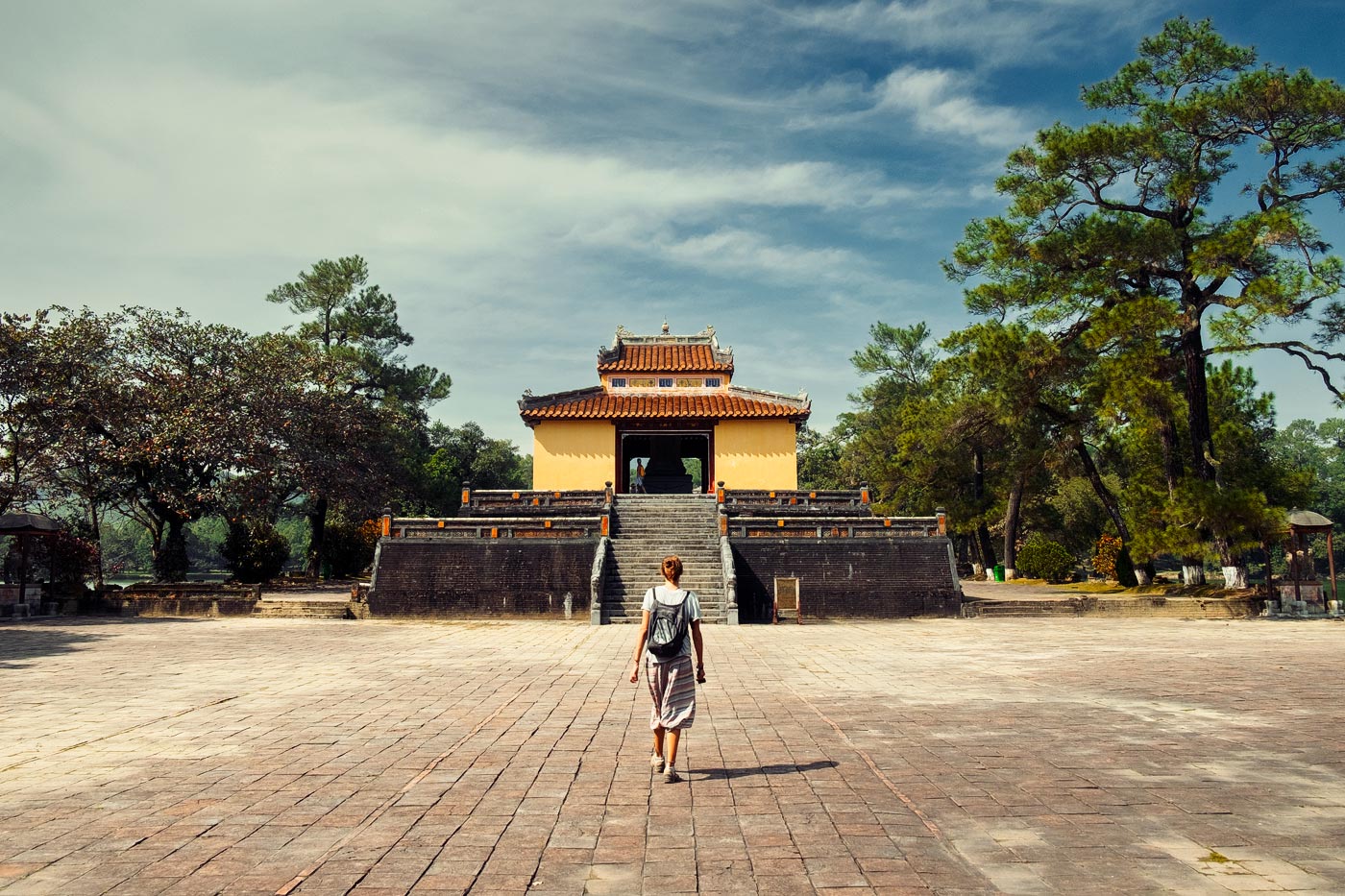
Hue is located on Vietnam’s central coast and is influenced by the monsoon patterns of Southeast Asia. The city experiences two main seasons: the rainy season and the dry season. Planning your trip around these seasons will help you make the most of your visit to this Vietnamese city.
Currently, and until further notice from Vietnamese authorities, citizens of 25 countries can travel to Vietnam without having to apply for a visa. You can obtain a 45-day visa exemption for Vietnam, allowing you to stay in the country for over a month and a half for free.
However, if you plan to stay longer, you will need to apply for a Vietnam visa. In the link above (coming soon), you’ll find all the ways to apply for it quickly and easily, with clear explanations.
It goes without saying how important it is to travel to Vietnam with a good insurance. We were the first ones to offer the famous 5% discount on IATI Insurance, but you also have it available with Heymondo Travel Insurance.
Follow the links bellow to get a discount on their website:
We arrived in Hue from Dong Ha and took advantage of having a motorbike, which made it easy to get around the city. It’s likely that Hue won’t be your first stop on a trip through Vietnam, so here are several ways you can get to this city.
There are almost daily flights (weather permitting) from Hanoi or Ho Chi Minh City to Phu Bai Airport. You can also fly into Da Nang Airport, which is about two hours away, and then take a taxi to Hue.
From Hanoi or Ho Chi Minh City, you can take a night train to Hue. Once you arrive at the station, it’s a 20-minute walk or a quick motorbike ride (negotiate the fare) to the area where most of the hotels are located.
If you’re traveling from other cities like Hoi An, several companies operate bus routes to Hue. You can inquire at your hotel, the bus station, various travel agencies, or book online via the 12asia website. Here are some links:
Nowadays, finding hotels, guesthouses, or restaurants in Vietnam with free Wi-Fi is the usual trend, although there are also those who wish (or need) to have continuous internet connection.
To help with that, we’ll tell you how to get a Vietnam eSIM and make the most of their affordable prices. And now, we also provide information about Vietnam’s eSIM with unlimited data. If you want to get one directly, use the following link (with a discount):
The Citadel of Hue (Kinh Thanh), situated beside the Perfume River, is a small city where the emperor resided. It features a 10 km perimeter wall with a width of 2 meters, surrounded by a 30-meter-wide moat. There are 10 gates to access the enclosure, which can be reached by crossing a bridge over the moat.
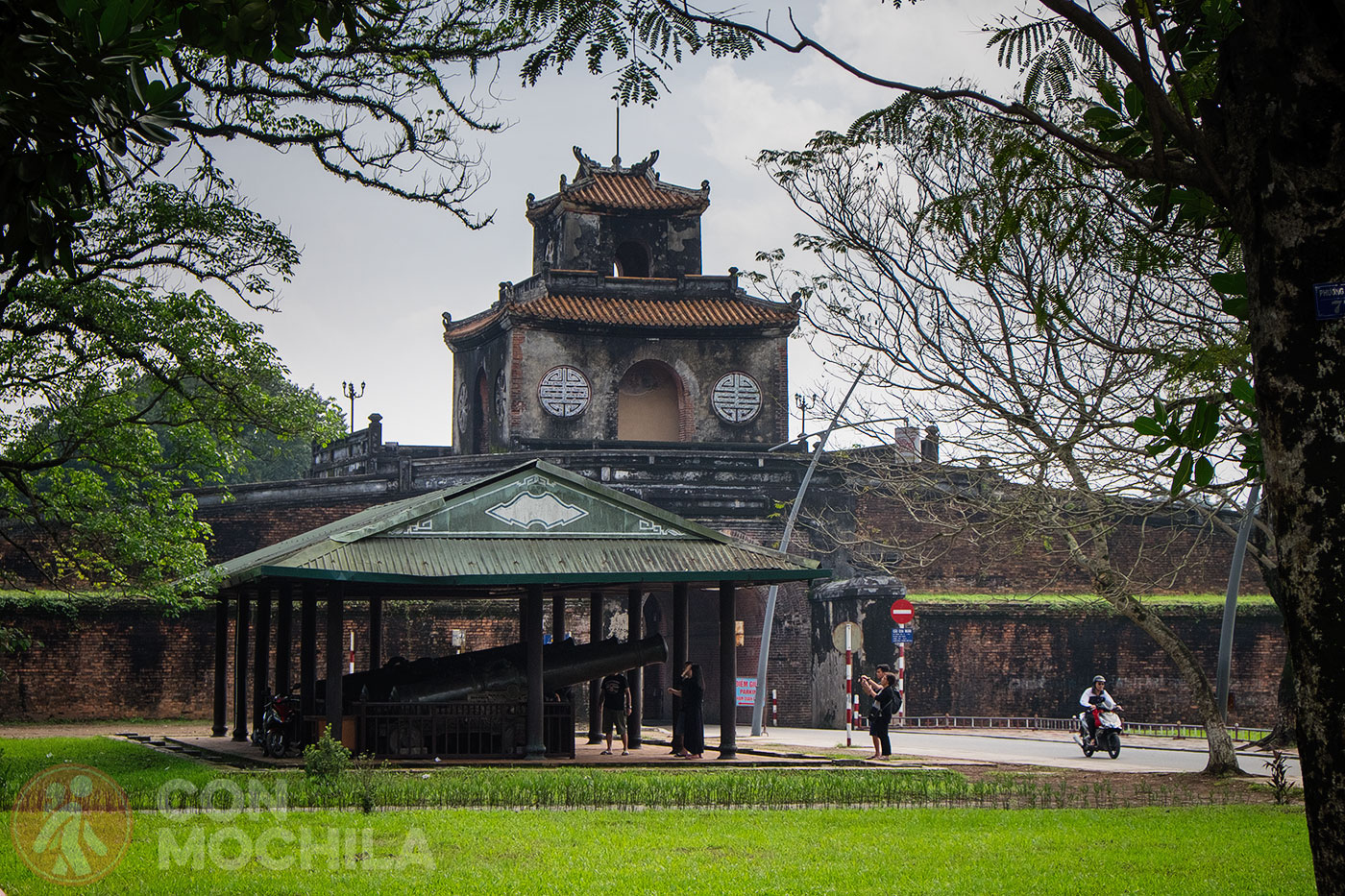
Once inside, we found various buildings such as the Thai Hoa Palace, lakes and gardens, as well as temples like To Mieu and Hung Mieu.
To the southeast of the Citadel, on both banks of the Perfume River, lie the Imperial Tombs of Hue, monuments dedicated to the rulers of the Nguyen dynasty, including Minh Mang, Khai Dinh, and Tu Doc. Most of these tombs were planned by the emperors themselves, reflecting the personality of each deceased ruler.
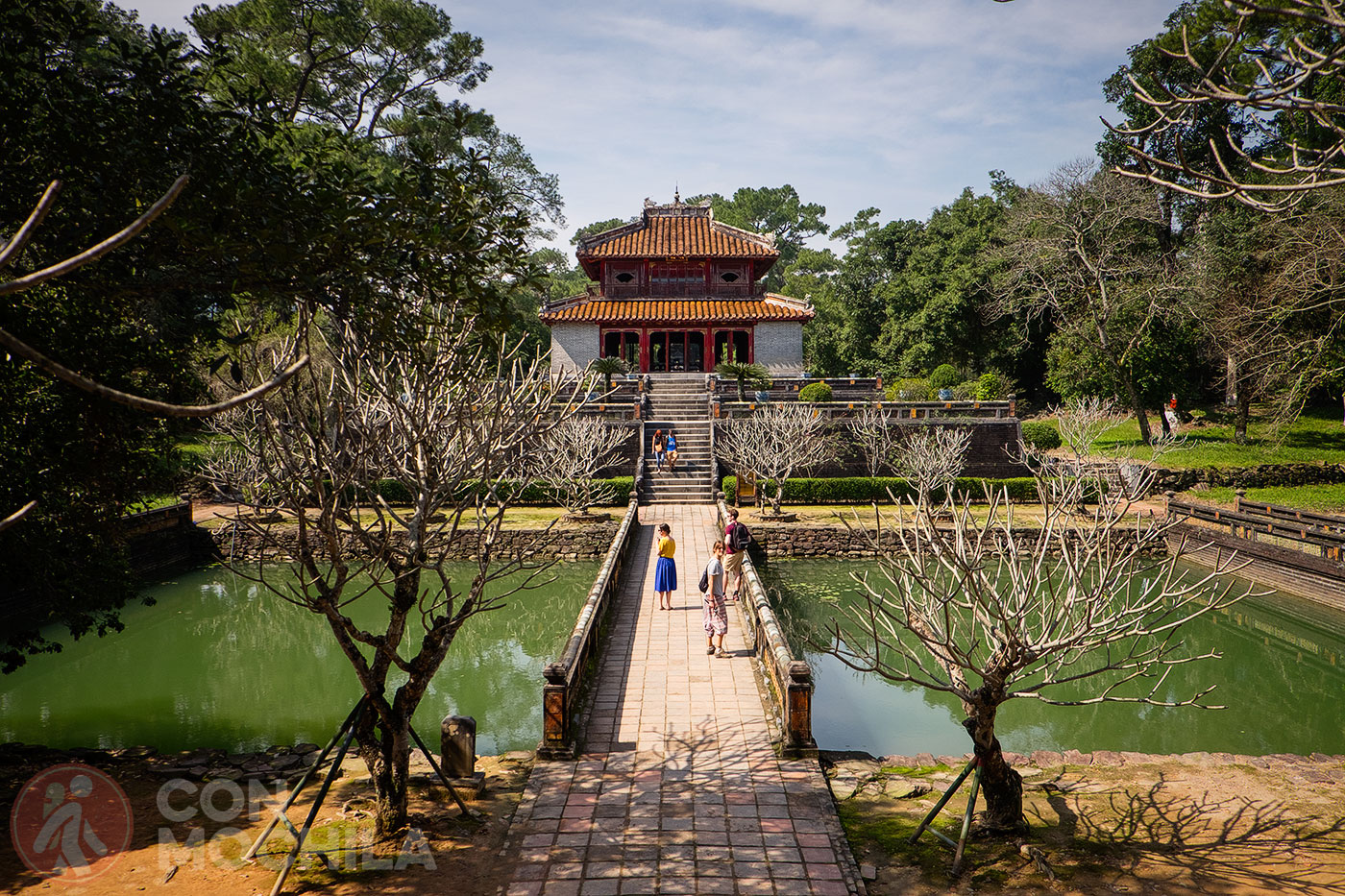
In the imperial tombs, you can see courtyards filled with stone elephants, horses, and soldiers, along with pavilions and temples dedicated to worshiping the soul of the emperor.
It is said that the Perfume River is so named because, during autumn, it is laden with flowers as it flows through Hue. Legends aside, this river plays a crucial role in the city. Taking a walk or a tour on one of the traditional boats can be a lovely way to relax while seeing some of the imperial tombs or pagodas, such as the Thien Mu Pagoda.
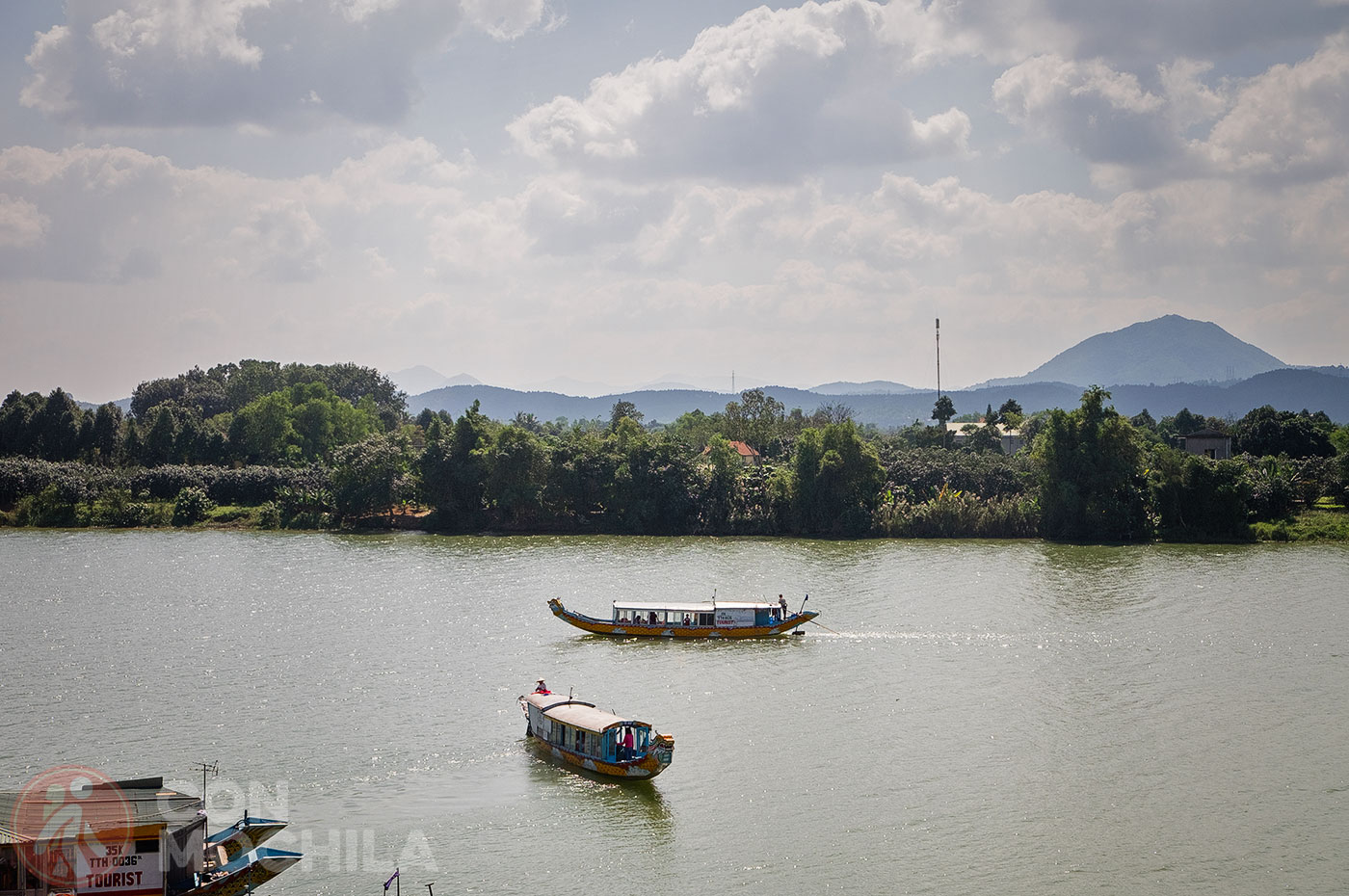
Visit one of the docks or agencies in the area and inquire about boat trips. Sometimes, you can also take a bike on the boat and cycle back to Hue.
Construida en 1601 entre un río y un bosque de pinos, al lado del río Perfume y a 3km de la Ciudadela, la Thien Mu Pagoda (Pagoda de la Señora Celestial) es uno de los edificios religiosos más antiguos del país.
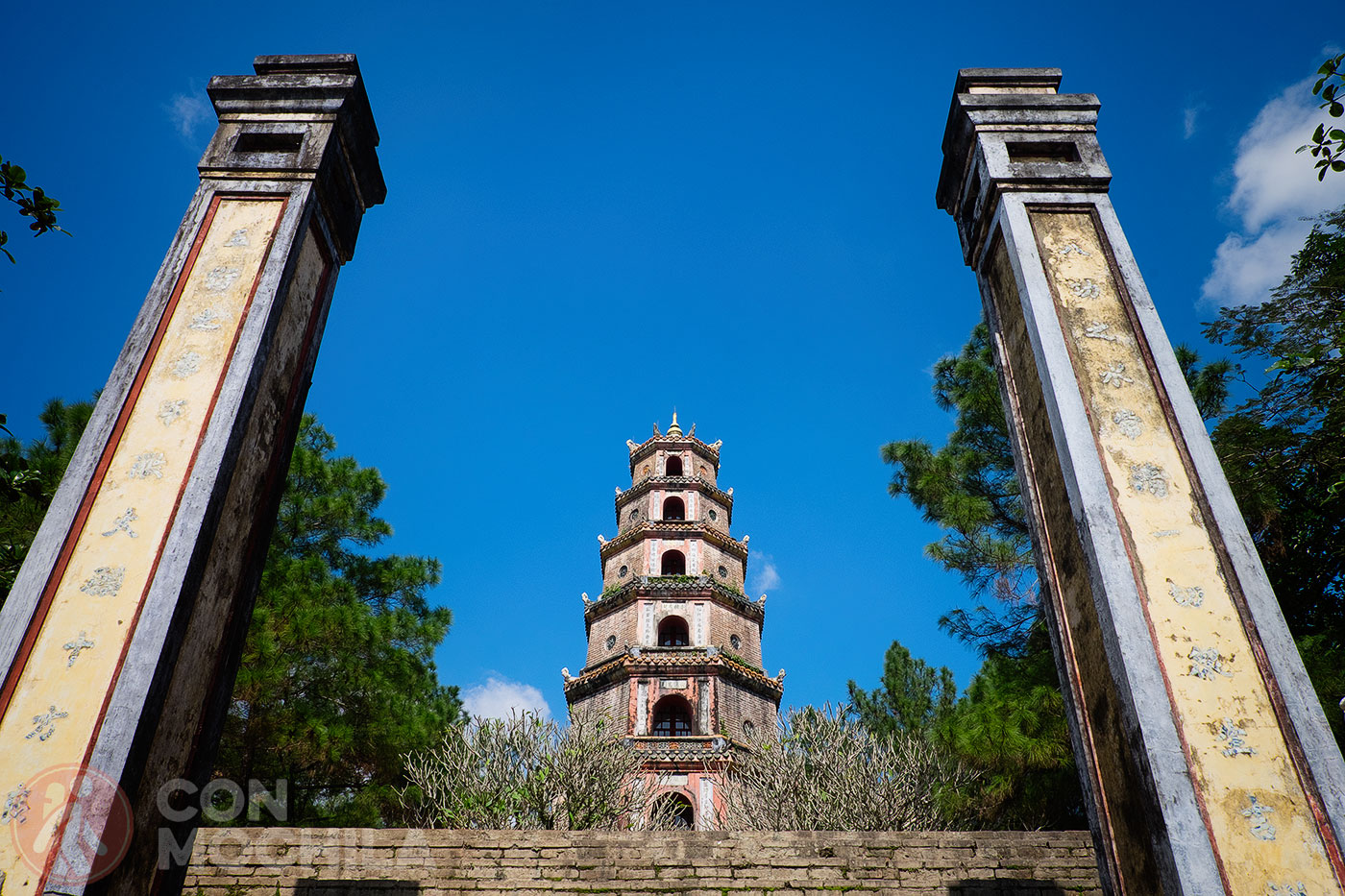
One notable aspect of Thien Mu Pagoda is that it houses the car used by the monk Thich Quang Duc when he self-immolated in 1963 on one of the streets of Saigon. Malcolm Browne’s photo of that monk won the Pulitzer Prize and later became the cover of a Rage Against The Machine album.
This visit is for those who have a bit more time and wish to explore the surroundings. Thanh Toan Covered Bridge is a pedestrian bridge located 7 km from Hue. Built in 1776 with funds provided by Mrs. Tran Thi Dao, this bridge was of great importance to the villagers of the time, as it allowed them to cross the canal to transport crops and goods for trade.
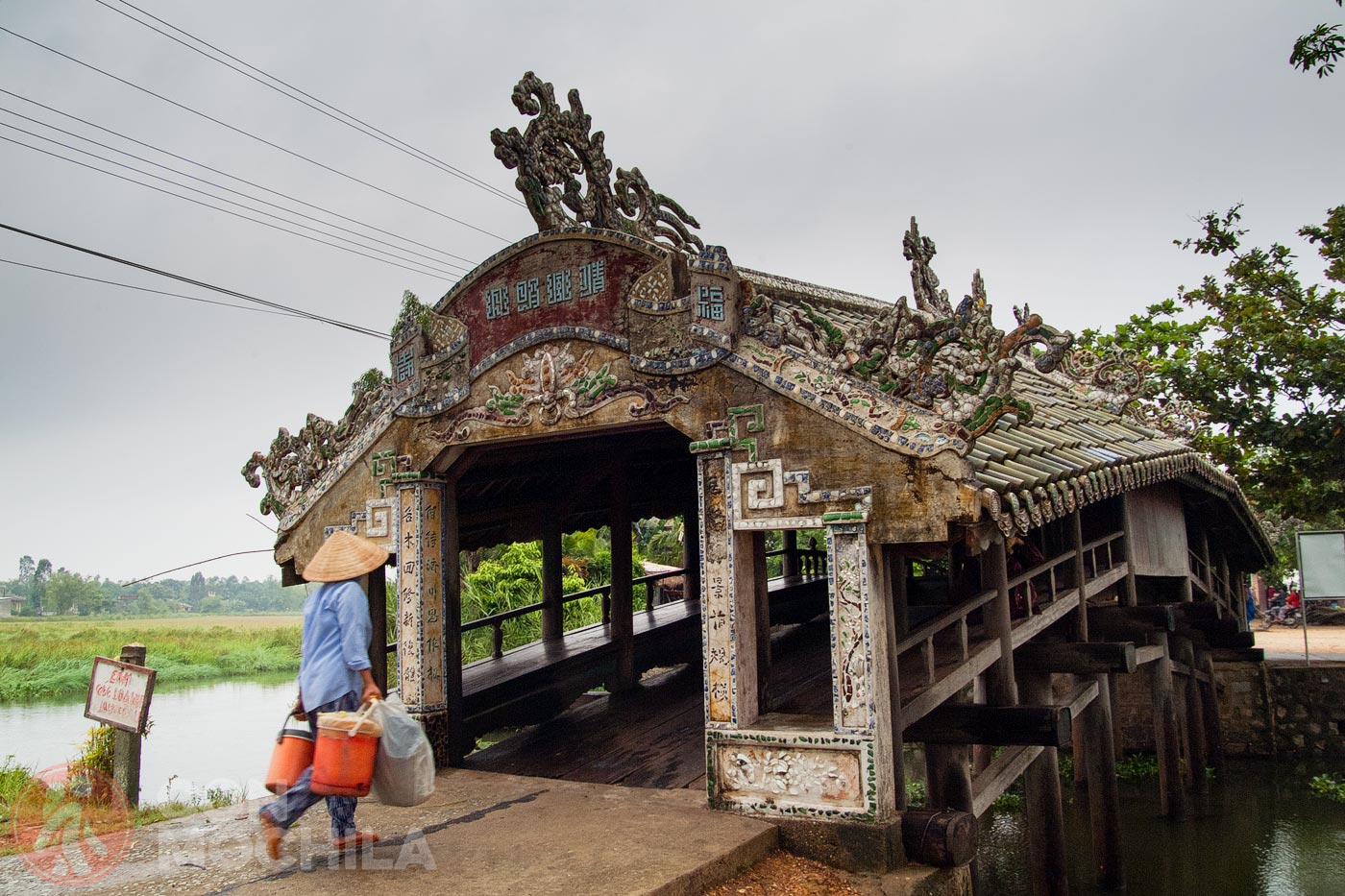
Located west of the Citadel on the banks of the Perfume River, the Hue Temple of Literature, also known as Van Mieu Hue or Van Thanh, is dedicated to Confucius and was founded by the Nguyen Dynasty. The complex consists of about 50 buildings, with the Hall of Worship of Confucius being the largest. Here, you can find steles bearing the names of candidates who passed the national examinations organized by the dynasty.
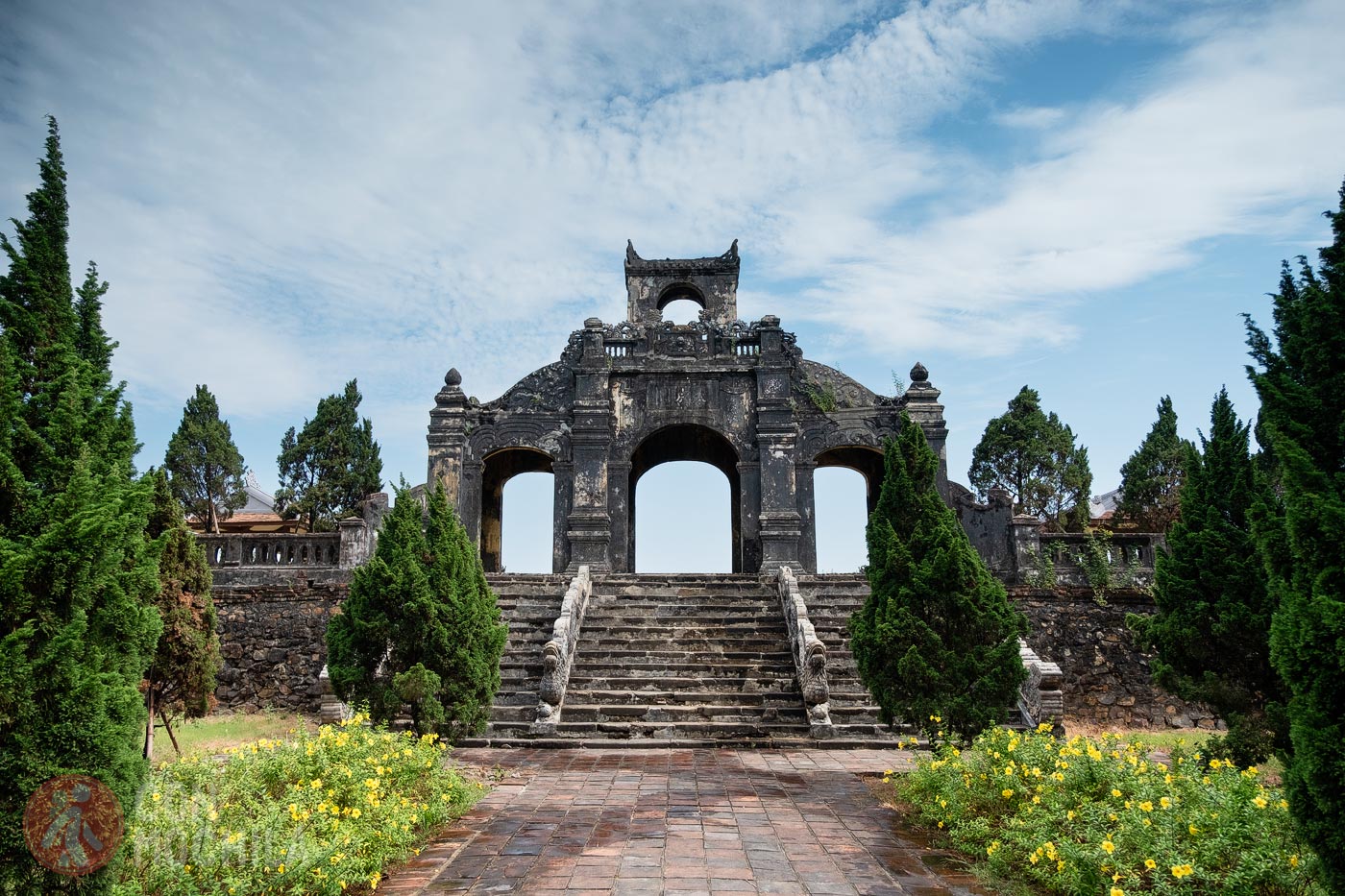
These types of temples in Vietnam remind us of the long-standing importance of knowledge and culture in the country.
One of the five entrances to the Citadel of Hue, the Chuong Duc Gate, built in 1804, is located on the west side and is one of the most impressive in this imperial city and all of Southeast Asia.
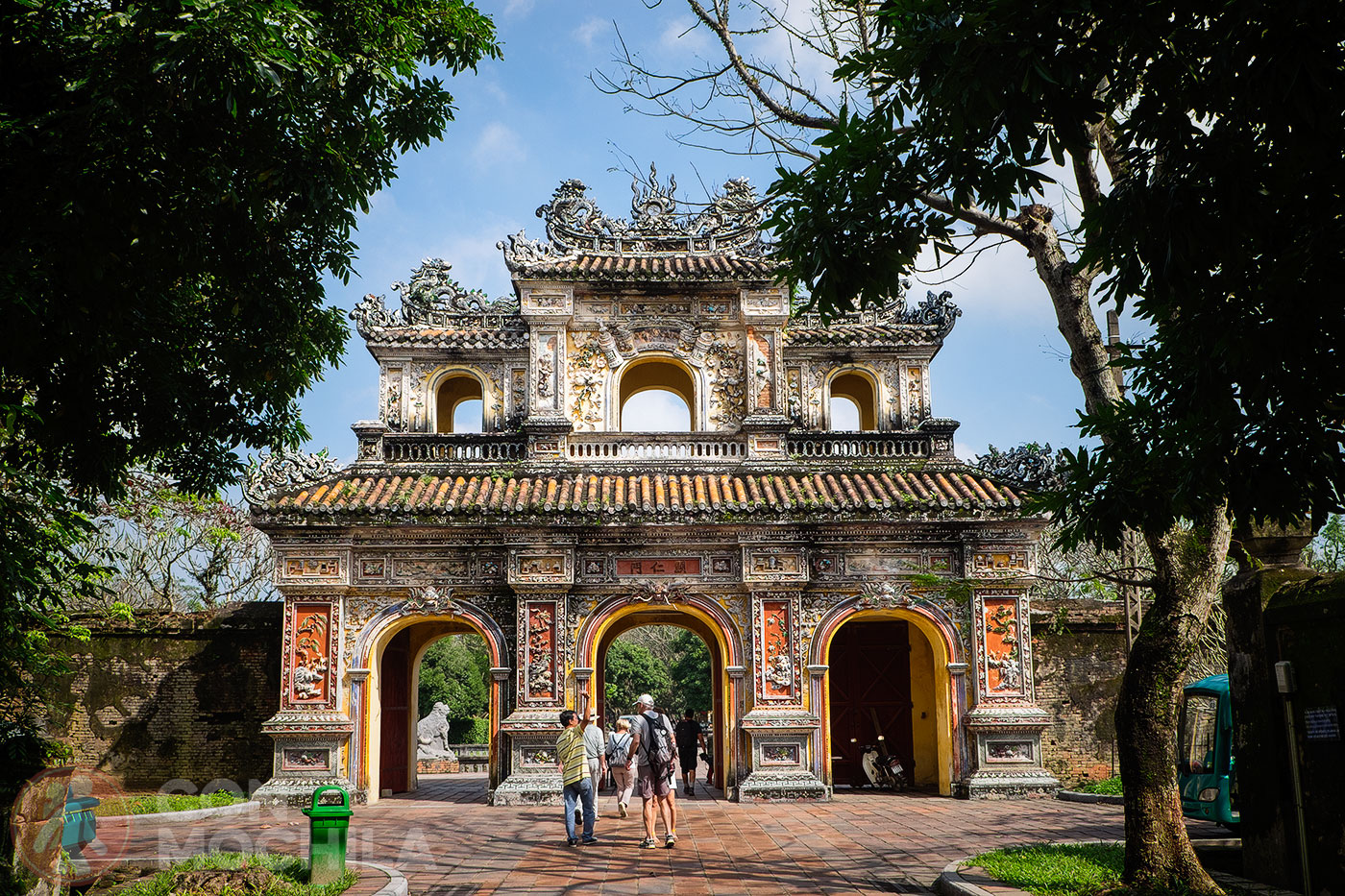
The ornate carvings on its walls, in various colors, reflect the grandeur of the Nguyen dynasty very well.
The Ngo Mon Gate, or Meridian Gate, is the main entrance to the Hue Citadel. It was constructed in 1833 during the reign of Emperor Minh Mang, modeled after the Meridian Gate of the Forbidden City in Beijing. The central passage was reserved for the emperor, while the four entrances on either side were used by everyone else.
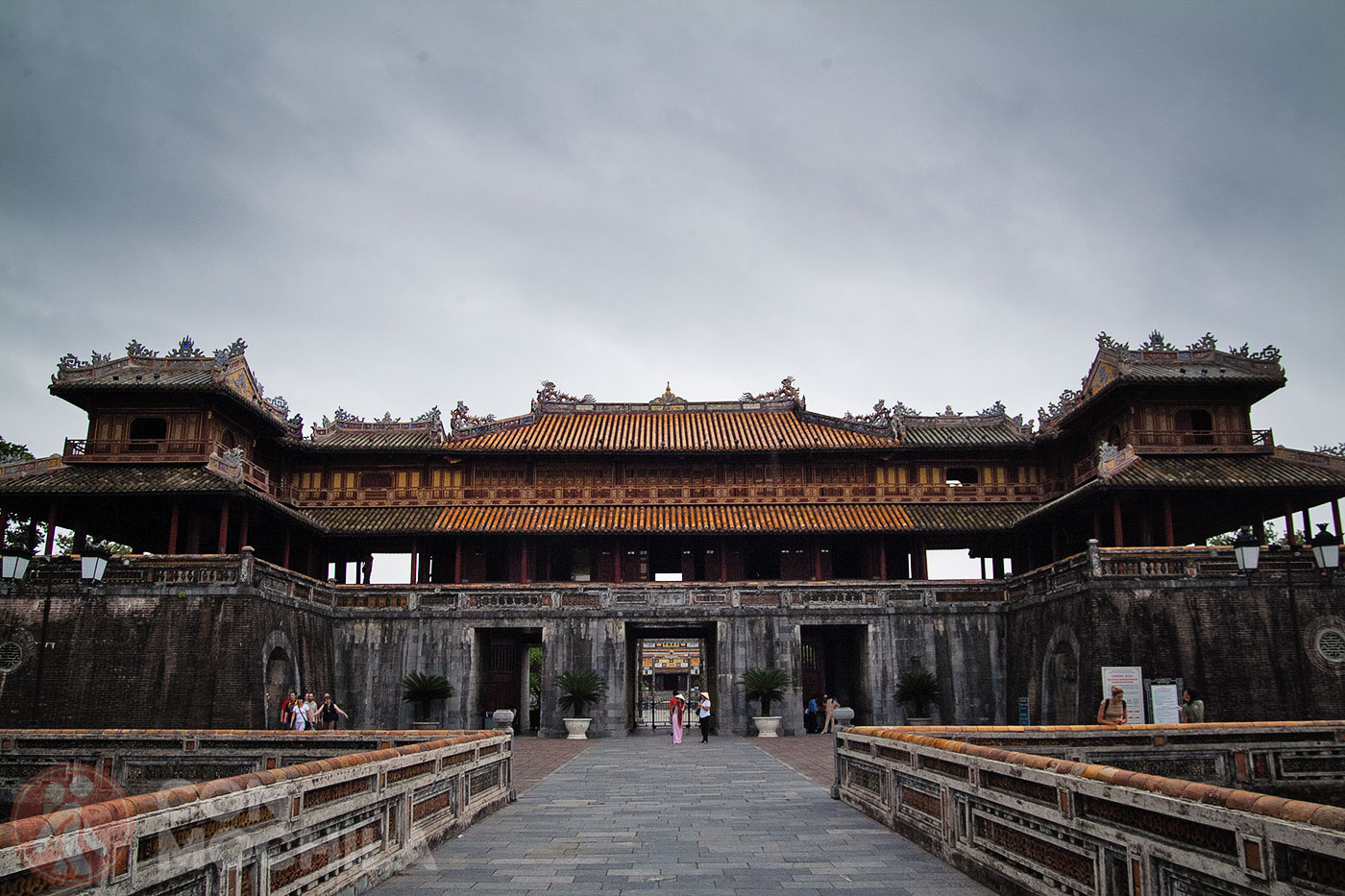
The gate consists of a central section and two wings on either side, representing the traditional entrance towers to palaces, temples, and tombs.
According to the precepts of the Nguyen Dynasty, only kings who died while reigning could be worshiped at the To Mieu Temple. Located within the Citadel, this complex features a large courtyard where the Hien Lam Pavilion stands, the tallest building in the complex at three stories high.
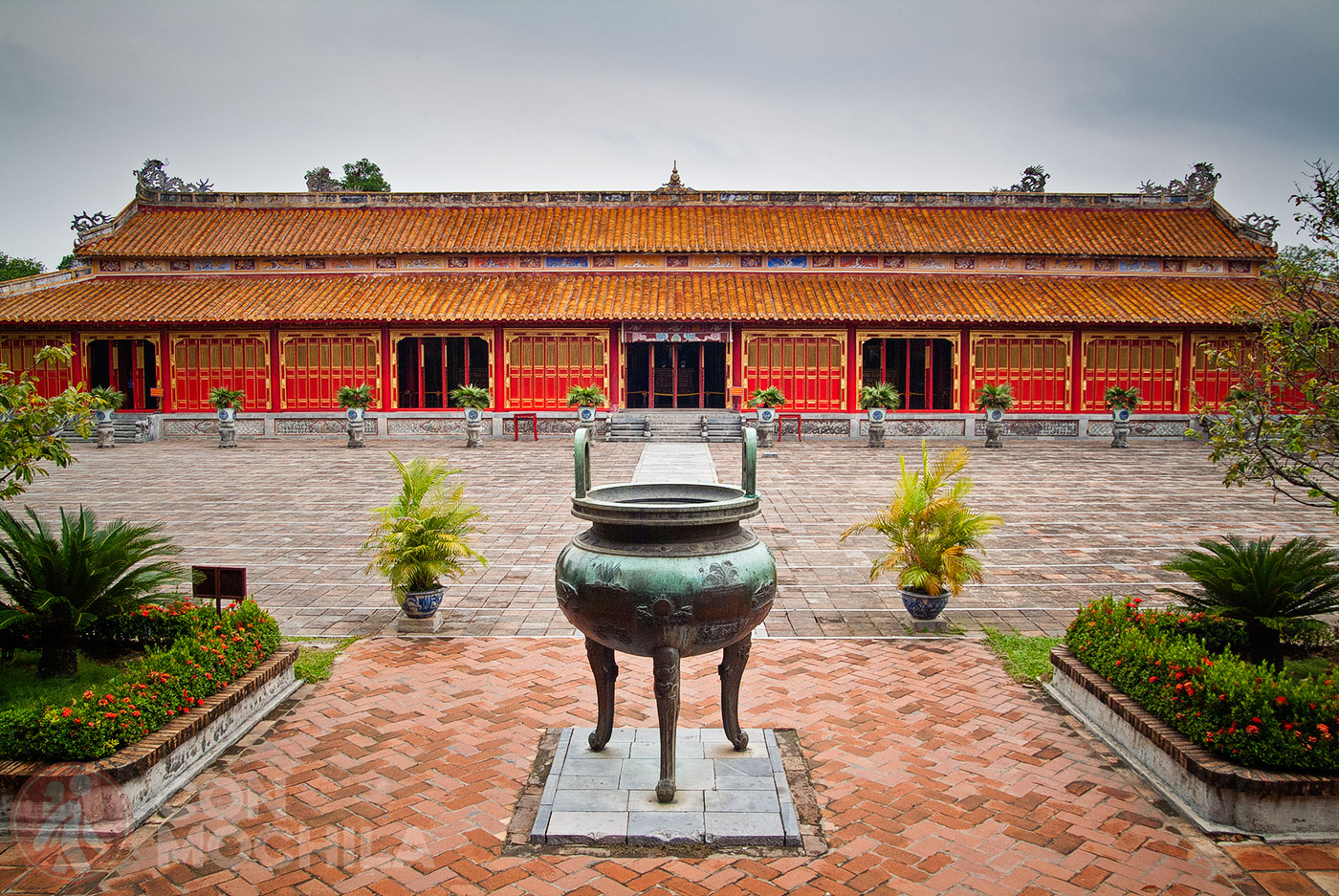
Inside there are various artifacts from the period, as well as ornate carvings of dragons. Between the pavilion and the temple, are the Nine Dynastic Urns, each dedicated to a member of the dynasty.
For 8 hours, you will explore the ancient capital of Vietnam, including its Citadel and imperial tombs, among other wonders. A Spanish-speaking guide will accompany you on this full-day tour of Hue to showcase some of the spectacular buildings in the city, as well as some of its most famous dishes.
If you love nature, we recommend this full-day excursion to Bach Ma National Park from Hue. Once there, you can take a dip in crystal-clear waters after an easy trek suitable for all levels and visit a waterfall with a drop of 300 meters.
Vietnam is a country filled with caves and spectacular natural beauty. This full-day excursion to Paradise Cave also includes a visit to the Phong Nha caves.
Hotel Amigo: The welcome tea we received as soon as we arrived at the hotel was delightful. Located on a central alley and surrounded by restaurants, Hotel Amigo offers Wi-Fi, air conditioning, and a minibar. The rooms are spacious, clean, and filled with natural light. Breakfast in the lobby is also included at a very reasonable price.
Take a look at these other recommendations:
Hue is not a very large city, so a good option is to explore it on foot or by bicycle.
Another typical option in Vietnam is to rent a motorbike or even hire a motorbike with a driver, negotiating a price per day or for a few hours.
If you plan to drive a motorcycle or any other vehicle in Vietnam, we recommend obtaining an international driving license in case you encounter a police check. Additionally, make sure you have travel insurance that covers you in case of an accident.
You can also negotiate a cyclo or a taxi (always insisting that they use the meter) to get around Hue.
Click on the image and it will take you to a new Google Maps window with all the points of interest to travel around Hue.